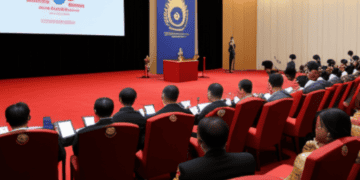The ASEAN+3, comprising the Association of Southeast Asian Nations along with Japan, China, and South Korea, have agreed to establish a new regional lending facility. This decision, aimed at enhancing the group’s ability to respond to emergencies, comes amid global economic uncertainties and high U.S. interest rates. The formal confirmation of this new scheme, known as the Rapid Financing Facility, is expected in the upcoming ministerial meetings scheduled for next spring and summer, according to Japan’s top financial diplomat, Masato Kanda.
The initiative is designed to operate alongside the existing Chiang Mai Initiative Multilateralisation (CMIM) network of multilateral currency swaps, which provides financial support during crisis situations. The new facility will fall under the CMIM umbrella, as stated in a joint statement by the deputies.
Masato Kanda, Vice Finance Minister for International Affairs, emphasized the need for a more readily accessible facility that can quickly address balance of payments demands during natural disasters or pandemics. The realization of this facility aims to enhance the use of existing currency swap lines and ensure members can efficiently access funds in emergency scenarios.
The ASEAN+3 group initially established the currency swap lines in 2000, following the Asian financial crisis, and later transformed it into a multilateral network in 2010. This network is a collaborative effort to prevent or tackle abrupt capital outflows. While Asian policymakers have affirmed that their countries possess adequate foreign reserves and safeguards against crises, they acknowledge the need for improvements in existing arrangements.
Stay on top of supply chain news with The Supply Chain Report. Enhance your international trade knowledge with free tools from ADAMftd.com.
#ASEANPlus3 #RapidFinancingFacility #ChiangMaiInitiative #CurrencySwap #ASEANFinance #JapanChinaSouthKorea #RegionalStability #FinancialSupport #GlobalEconomy #EmergencyLending #EconomicResilience #ASEANFinanceSummit

















